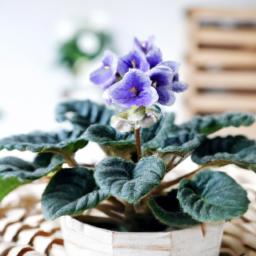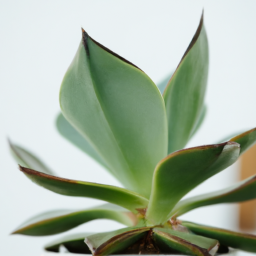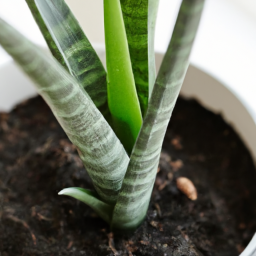
Are you new to the world of gardening and looking for the best plant to start with? Look no further! In this blog post, we will explore the perfect plant for beginners – one that is easy to care for, forgiving of mistakes, and sure to bring joy to your home. Whether you have a green thumb or are just starting out, this plant is the ideal choice for anyone looking to add some greenery to their space. So, let’s dive in and discover the best plant for beginners!
Top 5 Easy-to-Grow Plants for Beginners
Choosing the Right Plant
When it comes to choosing the best plant for beginners, it’s important to consider a few key factors. First and foremost, you’ll want to choose a plant that is easy to care for and forgiving of mistakes. Look for plants that are known for their resilience and ability to thrive in a variety of conditions. Additionally, consider the amount of natural light that your space receives, as this will play a big role in the success of your plant. Finally, think about your own lifestyle and how much time you can realistically dedicate to caring for your new plant.
Spider Plant
One of the best plants for beginners is the spider plant. Spider plants are incredibly easy to care for and can thrive in a wide range of conditions. They are known for their ability to remove toxins from the air, making them a great choice for indoor spaces. Spider plants prefer bright, indirect light and should be watered regularly, allowing the soil to dry out between waterings. With proper care, spider plants can produce beautiful, cascading foliage that will brighten up any room.
Another great thing about spider plants is that they are easy to propagate. Simply cut off one of the plant’s “spiderettes” and place it in water until roots form, then transfer it to soil. This allows you to expand your spider plant collection without having to purchase new plants.
Pothos
Pothos is another excellent choice for beginner plant enthusiasts. This plant is incredibly low-maintenance and can thrive in a variety of lighting conditions, making it perfect for those who may not have the sunniest of spaces. Pothos plants prefer to dry out between waterings and can even tolerate some neglect, making them a great option for those who may not have a green thumb.
One of the best things about pothos plants is their ability to purify the air. They are known for their ability to remove toxins such as formaldehyde and benzene from the air, making them a great choice for indoor spaces. Pothos plants can also be easily propagated by taking cuttings and placing them in water until roots form, then transferring them to soil.
Overall, pothos plants are a great choice for beginners looking to add some greenery to their space without a lot of hassle. With their low-maintenance nature and air-purifying abilities, they are sure to thrive in a variety of environments.
Succulents
Succulents are another great option for beginner plant enthusiasts. These plants are known for their unique appearance and ability to thrive in dry conditions, making them perfect for those who may not have a green thumb. Succulents come in a wide variety of shapes, sizes, and colors, making them a fun and versatile option for indoor spaces.
One of the key things to remember when caring for succulents is to allow the soil to dry out between waterings. Overwatering is one of the most common mistakes that people make when caring for succulents, so be sure to let the soil dry completely before watering again. Additionally, succulents prefer bright, indirect light, so be sure to place them in a sunny spot in your home.
Overall, succulents are a great choice for beginners looking to add some unique and low-maintenance plants to their collection. With their striking appearance and easy care requirements, they are sure to thrive in a variety of environments.
In conclusion, when it comes to choosing the best plant for beginners, it’s important to consider factors such as ease of care, lighting requirements, and your own lifestyle. Spider plants, pothos, and succulents are all excellent choices for beginner plant enthusiasts, as they are easy to care for and forgiving of mistakes. By selecting the right plant for your space and providing it with the proper care, you can enjoy the beauty and benefits of indoor plants with ease.

Choosing the Best Low-Maintenance Plant for Novice Gardeners
Understanding Your Environment
When it comes to choosing the best low-maintenance plant for novice gardeners, it’s important to first understand the environment in which you’ll be growing the plant. Consider factors such as the amount of sunlight the area receives, the climate of your region, and the type of soil in your garden. Different plants have different requirements when it comes to sunlight, water, and soil type, so it’s essential to choose a plant that will thrive in your specific environment.
If you have a sunny garden with well-draining soil, you may want to consider low-maintenance plants such as succulents or cacti. These plants are known for their ability to thrive in hot, dry conditions and require minimal watering. On the other hand, if you have a shady garden with moist soil, you may want to opt for low-maintenance plants such as ferns or hostas, which are well-suited to these conditions.
Choosing the Right Plant
Once you’ve taken stock of your environment, it’s time to choose the right low-maintenance plant for your garden. Consider factors such as the size of the plant, its growth habit, and its overall appearance. Some novice gardeners may prefer to start with smaller plants that are easy to care for, while others may be more interested in larger, showier plants.
When choosing a low-maintenance plant, it’s also important to consider the plant’s water and sunlight requirements. Some plants, such as succulents and cacti, require very little water and can thrive in sunny conditions, while others, such as ferns and hostas, prefer moist soil and shade. Choose a plant that aligns with your gardening style and the conditions in your garden to ensure its success.
Caring for Your Plant
Once you’ve chosen the best low-maintenance plant for your garden, it’s important to provide it with the care it needs to thrive. Water your plant according to its specific requirements, taking care not to overwater or underwater. Monitor the plant for signs of stress, such as wilting or yellowing leaves, and adjust your care routine accordingly.
In addition to watering, it’s important to provide your plant with the right amount of sunlight and nutrients. Most low-maintenance plants require at least a few hours of sunlight per day to thrive, so be sure to place your plant in a sunny spot in your garden. You can also supplement your plant’s nutrients with a balanced fertilizer to ensure healthy growth.
By following these steps and choosing the best low-maintenance plant for your garden, you can enjoy the beauty of nature with minimal effort. Whether you opt for succulents, ferns, or hostas, there’s a low-maintenance plant out there that’s perfect for novice gardeners. Happy gardening!

Beginner-Friendly Houseplants: The Ultimate Guide
Choosing the Right Plant
When it comes to choosing the best plant for beginners, there are a few key factors to consider. First and foremost, you’ll want to select a plant that is easy to care for and forgiving of minor mistakes. Some great options for beginners include spider plants, pothos, and snake plants. These plants are known for their resilience and ability to thrive in a variety of conditions.
Another important factor to consider is the amount of light your plant will receive. Different plants have different light requirements, so it’s important to choose a plant that will be happy in the spot where you plan to place it. If you have a sunny window, you might consider a plant that thrives in bright, indirect light. If your space is a bit darker, look for a plant that can tolerate lower light levels.
Finally, consider the size of the plant and how much space you have available. Some plants, like peace lilies or rubber plants, can grow quite large over time. If you’re working with limited space, you might want to opt for a smaller plant like a succulent or a spider plant.
Caring for Your Plant
Once you’ve selected the perfect plant for your space, it’s important to understand how to care for it properly. The key to keeping your plant healthy and thriving is to provide it with the right amount of water, light, and nutrients.
When it comes to watering, it’s important to strike the right balance. Overwatering can lead to root rot, while underwatering can cause your plant to wilt and die. The best way to determine when your plant needs water is to stick your finger into the soil. If the top inch or so is dry, it’s time to water. Be sure to water thoroughly, allowing excess water to drain out of the bottom of the pot.
In terms of light, most houseplants prefer bright, indirect sunlight. Avoid placing your plant in direct sunlight, as this can scorch the leaves. If your plant starts to look leggy or pale, it may not be getting enough light. Consider moving it to a brighter spot or supplementing with a grow light.
Finally, be sure to feed your plant regularly with a balanced fertilizer. Most houseplants benefit from a monthly feeding during the growing season. Follow the instructions on the fertilizer package carefully to avoid over-fertilizing, which can harm your plant.
Troubleshooting Common Issues
Even with the best intentions, it’s possible to encounter issues with your houseplants. The key is to address problems quickly before they escalate. Some common issues you may encounter include yellowing leaves, brown tips, or pests.
Yellowing leaves can be a sign of overwatering, underwatering, or nutrient deficiencies. Evaluate your watering routine and consider adjusting the amount or frequency of water. If your plant is in a low-light spot, it may also benefit from a move to a brighter location.
Brown tips on the leaves can be caused by a variety of factors, including dry air, over-fertilizing, or fluoride in the water. Increase humidity around your plant by misting the leaves or placing a tray of water nearby. Avoid fertilizing too frequently, and consider using distilled water to avoid fluoride buildup.
If you notice pests on your plant, such as spider mites or mealybugs, act quickly to prevent them from spreading. Remove pests by hand if possible, or treat with a gentle insecticidal soap. Quarantine any affected plants to prevent the infestation from spreading to other plants in your collection.
In conclusion, choosing the best plant for beginners is all about finding a plant that suits your space and lifestyle. With a little bit of research and care, you can enjoy the beauty and benefits of houseplants in your home. Happy planting!
In a Nutshell
Are you new to gardening and not sure where to start? Look no further! One of the best plants for beginners is the humble succulent. These hardy plants are perfect for those just starting out, as they require minimal care and are forgiving if you forget to water them from time to time. With a wide variety of shapes, sizes, and colors to choose from, succulents are a great way to add some greenery to your home without the stress of high maintenance plants.
Succulents thrive in bright, indirect light and only need to be watered sparingly, making them an ideal choice for busy individuals or those with a black thumb. Simply place them in a sunny spot and water them once every couple of weeks, and you’ll have a beautiful and low-maintenance plant to brighten up your space. So if you’re looking to dip your toes into the world of gardening, start with a succulent and watch your green thumb grow!
Your Questions Answered. Comprehensive FAQ:
Q1: What is the best plant for beginners?
A1: The best plant for beginners is the snake plant. It is low-maintenance, requiring minimal watering and can thrive in various light conditions.
Q2: How often should I water my beginner plant?
A2: It is recommended to water your beginner plant once every 1-2 weeks, allowing the soil to dry out between waterings to prevent overwatering.
Q3: What are some other easy-to-care-for plants for beginners?
A3: Other easy-to-care-for plants for beginners include pothos, spider plants, and peace lilies. These plants are also low-maintenance and can adapt to different environments.
Q4: Do beginner plants require a lot of sunlight?
A4: Most beginner plants thrive in indirect sunlight, making them ideal for indoor spaces with limited natural light. However, it is important to research the specific light requirements of each plant to ensure proper growth.
Q5: How can I prevent common issues like overwatering and pests with beginner plants?
A5: To prevent overwatering, make sure to allow the soil to dry out between waterings and avoid standing water in the plant’s container. To prevent pests, regularly inspect your plant for any signs of infestation and consider using natural pest control methods like neem oil.
Dr. Olivia Green is a botanist with over two decades of experience in indoor plant cultivation. She holds a Ph.D. in Plant Biology and has dedicated her career to researching plant behavior in controlled environments. Dr. Green is passionate about helping plant enthusiasts master the art of indoor gardening through her extensive knowledge and practical insights.


